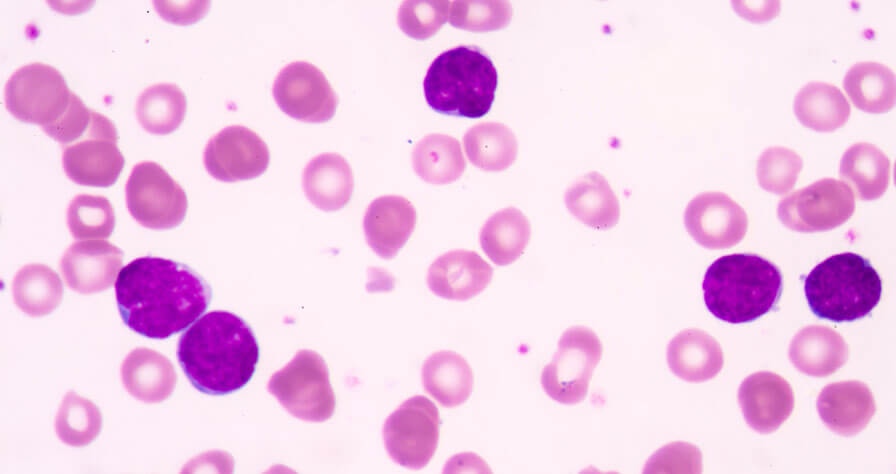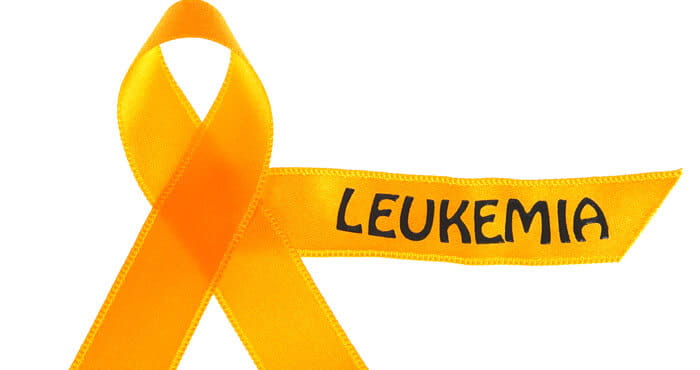Types of Leukemia

Leukemia is cancer that starts in the blood-forming cells of the bone marrow. It usually involves the white blood cells, which normally grow and divide in an orderly way, as your body needs them to fight infections and other diseases. But in people with leukemia, the bone marrow produces abnormal white blood cells, which don’t function properly. Leukemia is the most common type of blood cancer in people over the age of 55 and under the age of 15.
How Many Types of Leukemia Are There?
There are four main types of leukemia and several other rare forms. Leukemia is classified in two different ways: by the type of white blood cells affected and by how quickly the disease progresses. The classifications of leukemia are:
- Lymphocytic (also known as lymphoid or lymphoblastic). This develops in the white blood cells called lymphocytes that produce antibodies or other substances to fight infection.
- Myeloid (also known as myelogenous). This develops in white blood cells known as neutrophils and monocytes that help fight bacterial or fungal infections.
- Acute. This is rapidly progressing and results in the buildup of immature, functionless blood cells (known as blasts), which decrease the marrow’s ability to produce enough healthy cells.
- Chronic. This is a slow buildup of more mature but still abnormal cells. These blood cells replicate or accumulate more slowly and can function normally for a period of time. Some forms of chronic leukemia initially produce no early symptoms and can go unnoticed or undiagnosed for years.
What Are the 4 Main Types of Leukemia?
The four most common types of leukemia are:
- Acute lymphocytic leukemia (ALL)
- Acute myeloid leukemia (AML)
- Chronic lymphocytic leukemia (CLL)
- Chronic myeloid leukemia (CML)
Acute lymphocytic (lymphoblastic) leukemia (ALL)
ALL is the most common leukemia in young children, though it can also occur in adults. It begins in the B or T lymphocytes, which are immature white blood cells. Lymphocytes are the building blocks of the lymphoid tissues that make up the immune system. The leukemia cells are carried in the bloodstream to other organs and tissues where they can grow and divide. They can spread to these areas:
- Brain
- Liver
- Lymph nodes
- Spleen
- Testes
Acute myeloid (myelogenous) leukemia (AML)
AML is the most common type of acute leukemia in adults and it tends to progress quickly. It can affect any component of the blood and there are many subtypes of AML. Blood stem cells in the bone marrow form into either:
- Lymphoid cells, which become white blood cells.
- Myeloid cells, which can become red blood cells, white blood cells, or platelets.
In AML, myeloid stem cells usually mature into abnormal myeloblasts, or white blood cells. They can also become abnormal red blood cells or platelets. As they multiply, they overwhelm the normal cells in your bone marrow and blood. The cancer cells can also spread to other parts of your body.
Chronic lymphocytic leukemia (CLL)
Usually affecting older adults, CLL accounts for about a third of leukemia diagnosis. One form of CLL progresses slowly and symptoms may not appear until years after onset. Another form of CLL grows very quickly. CLL beings in the B lymphocytes and as the cells proliferate, they crowd out the normal cells. Other subtypes of CLL exist that affect other types of cells.
Chronic myeloid (myelogenous) leukemia (CML)
CML is rare, making up only 10% of leukemia diagnoses. Adults are more likely than children to get CML. This type of leukemia occurs when a genetic change turns the myeloid cells into immature cancer cells. These cells then grow slowly and overwhelm the healthy cells in the bone marrow and blood. A subtype of CML can form very quickly and is very hard to treat.
Rare and Less-Common Types of Leukemia
In addition to the four major types of leukemia, there are several less common forms that include:
Hairy cell leukemia (HCL)
Named for the way that the cells look under a microscope, hairy cell leukemia is a rare subtype of CLL that progresses slowly and affects fewer than 6,000 people annually. This type of leukemia is caused when bone marrow makes too many B cells (lymphocytes), a type of white blood cell that fights infection. As the number of leukemia cells increases, fewer healthy white blood cells, red blood cells, and platelets are produced. Some people with HCL live with the disease for many years before symptoms appear.
Myelodysplastic syndromes (MDS)
MDS are a group of closely related diseases in which the bone marrow produces too few functioning red blood cells (which carry oxygen) and white blood cells (which fight infection), or platelets (which prevent or stop bleeding), or any combination of the three.
About 13,000 people are diagnosed with MDS annually, based on certain changes in the blood cells and marrow. MDS was previously referred to as a preleukemic condition because some people who have it develop acute leukemia, though most patients will never develop it.
Find Out More About Types of Leukemia with Baptist Health
Learn more about the different types of leukemia in adults and children.
Sources:
American Cancer Society
Mayo Clinic
Memorial Sloan Kettering Cancer Center
Cancer Treatment Centers of America
UPMC Hillman Cancer Center



